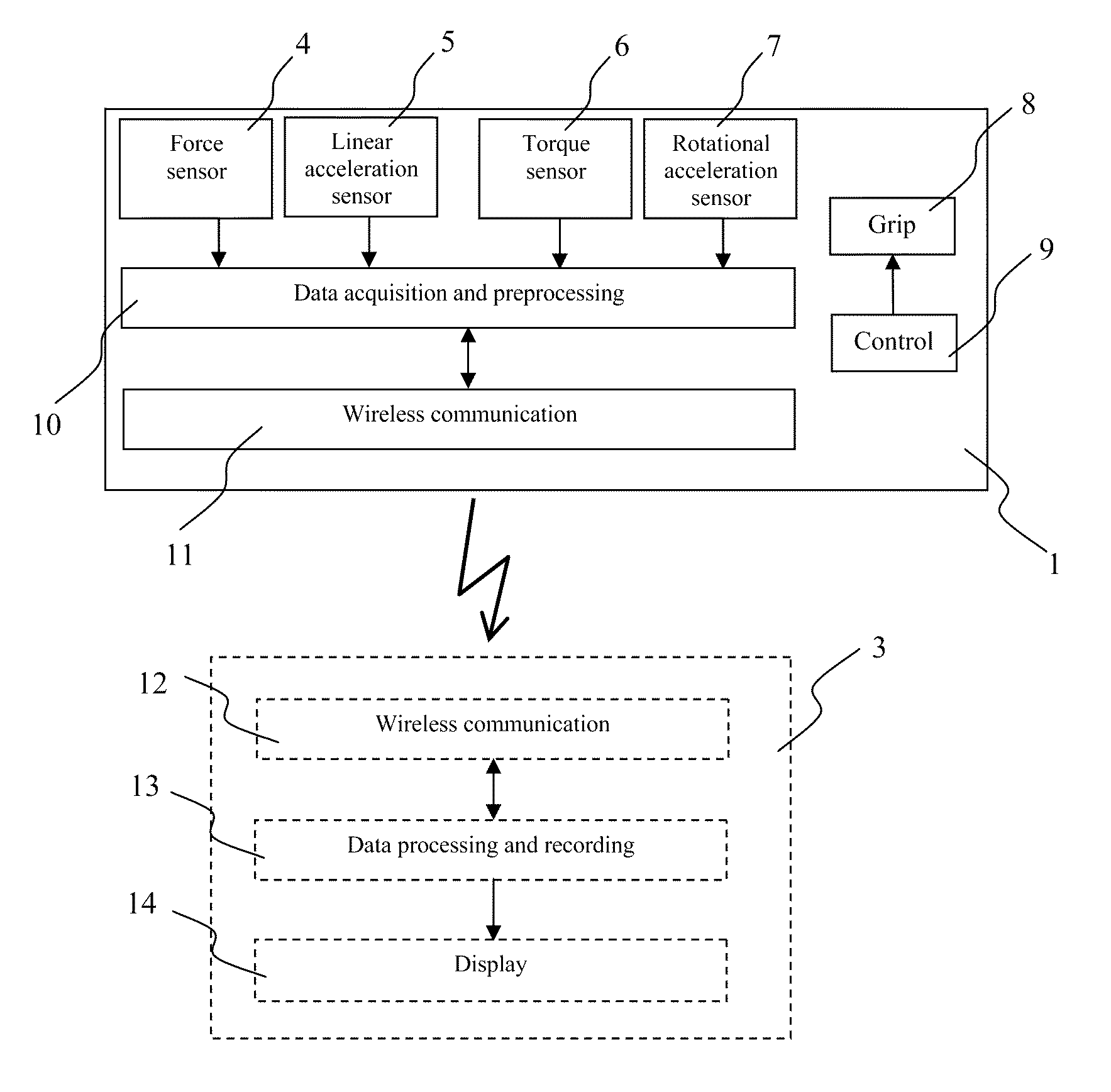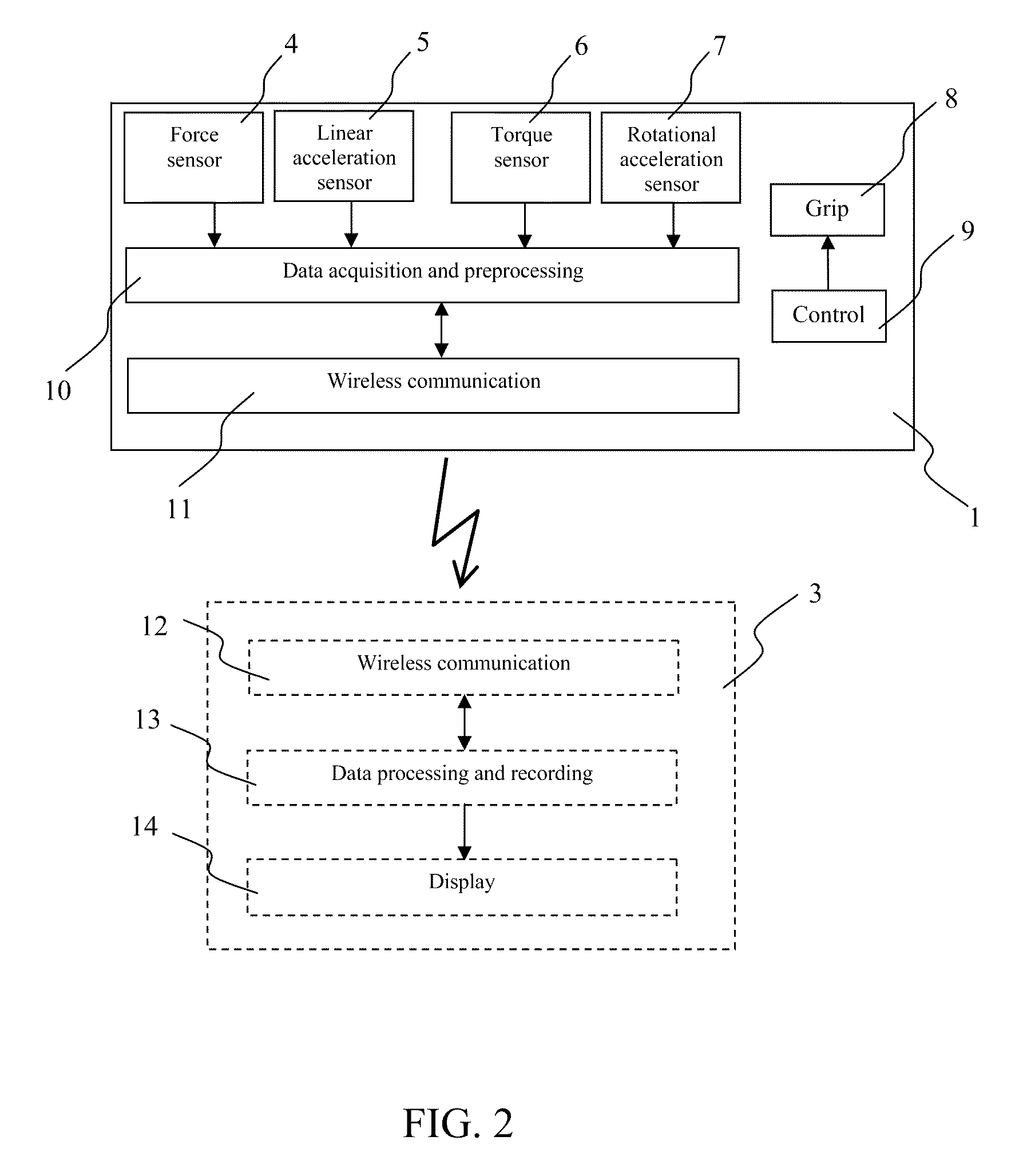Handgrip for assessment of colonoscope manipulation
a technology for colonoscopy and handgrip, which is applied in the field of handgrip for assessment of colonoscopy manipulation, can solve the problems of pain in application of force to the colon and its anatomic attachments, subjective training metrics, and excessive force, and achieve the effect of accurately measuring and recording, and being convenient to us
- Summary
- Abstract
- Description
- Claims
- Application Information
AI Technical Summary
Benefits of technology
Problems solved by technology
Method used
Image
Examples
Embodiment Construction
[0036]Colonoscopy procedure will now be briefly described. Colonoscopy requires that push, pull and torque forces be applied to the endoscope shaft to advance it through the colon. The applied forces account for the two most important limitations of colonoscopy: pain and colonic perforation. Conscious and deep sedation is used to control pain and the anxiety associated with anticipation of pain. This sedation is administered as a combination of an analgesic and a sedative medication. Sedation enables the patient to tolerate greater forces applied by the operator to advance the instrument. There is significant variability between operators in the amount of sedation used. While some operators use little or no sedation, others use deep sedation. These observations suggest that the technical manipulation of the colonoscope is critically important in causing pain. In addition, perforation is a rare but most serious complication of colonoscopy. The reported rate of colonic perforations va...
PUM
 Login to View More
Login to View More Abstract
Description
Claims
Application Information
 Login to View More
Login to View More - R&D
- Intellectual Property
- Life Sciences
- Materials
- Tech Scout
- Unparalleled Data Quality
- Higher Quality Content
- 60% Fewer Hallucinations
Browse by: Latest US Patents, China's latest patents, Technical Efficacy Thesaurus, Application Domain, Technology Topic, Popular Technical Reports.
© 2025 PatSnap. All rights reserved.Legal|Privacy policy|Modern Slavery Act Transparency Statement|Sitemap|About US| Contact US: help@patsnap.com



